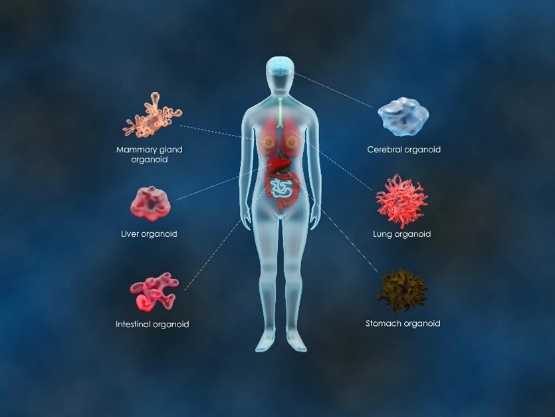Organoid Differentiation from Induced Pluripotent Stem Cells

In recent years, organoids have emerged as a revolutionary tool in biological research and regenerative medicine. These three-dimensional mini-organs, cultured in vitro, mimic the structure and function of native tissues more accurately than traditional cell culture models. One of the most promising sources for generating organoids is induced pluripotent stem cells (iPSCs), which have the potential to differentiate into various cell types found in different organs.
Brain Organoid Differentiation
- The differentiation of iPSCs into brain organoids holds immense potential for unraveling the complex mechanisms underlying neurodevelopmental disorders, such as Alzheimer's disease and autism.
- As a great stride forward, the development of 3D cerebral organoids derived from human PSCs built upon the foundational neural differentiation protocols but additionally provided instructive morphogenetic cues followed by growth in a suspension bioreactor. These organoids contained functional neurons with cortical self-organization, specified forebrain and hindbrain regions and, remarkably, even included differentiation of immature retina and choroid plexus.
Cardiac Organoid Differentiation
Recently, considerable advances have been made in the development of self-organizing cardiac organoids. Progressive refinement of differentiation protocols has recently generated complex cardiomyocyte organoids with a central void chamber. Furthermore, iPSCs have been used to engineer 3D cardiac muscle tissue to evaluate the effect of mechanical forces, metabolism, and the extracellular matrix on cardiomyocyte maturation.
Kidney Organoid Differentiation
Derivation of human kidney organoids from iPSCs was first reported in 2015, as complex 3D structures containing nephron components (glomeruli and proximal and distal tubules) as well as stroma and vasculature. Subsequently, it was shown that iPSCs can be differentiated into ureteric bud progenitor-like cells that, upon culture in 3D, develop into primitive ureteric buds that can be applied to modeling polycystic kidney disease (PKD).
Lung Organ Differentiation
Lung organoids derived from iPSCs offer new avenues for understanding lung development, modeling respiratory diseases, and advancing drug discovery. It has been developed technologies to differentiate iPSCs into lung organoids, which consist of various cell types found in the lungs, including alveolar epithelial cells, bronchial epithelial cells, and mesenchymal cells.
Intestinal Organ Differentiation
Intestinal organoids can be derived from adult intestinal stem cells as well as PSCs. By using a strict schedule of morphogen exposure to specify endoderm commitment, foregut, and hindgut fate, organoids can be generated from human PSCs containing functional enterocytes as well as goblet cells, Paneth cells, and neuroendocrine cells.
Creative Bioarray Relevant Recommendations
By leveraging its comprehensive knowledge of stem cell biology, tissue engineering, and cell culture techniques, Creative Bioarray consistently delivers high-quality organoids that closely resemble the physiological and molecular characteristics of native tissues.
| Services and Product Types | Description |
| Brain Organoid Differentiation | We provide iPSC-derived brain organoids as ready-to-use products, as well as a specialized medium to support the optimal performance of the organoids. |
| Cardiac Organoid Differentiation | We have established a scaffold-free protocol to generate multicellular, beating, and self-organized human cardiac organoids in vitro from hiPSCs that can be cultured for the long term. |
| Kidney Organoid Differentiation | We provide a kidney organoid differentiation service to differentiate iPSCs into 3D kidney organoids that closely mimic the structural and functional characteristics of real human kidneys. |